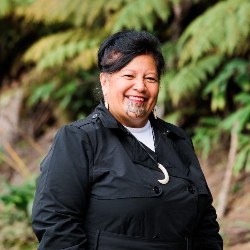Hasler Speech - NZ On Air Broadcasting Symposium
SPEECH NOTES
HON MARIE HASLER
MINISTER FOR CULTURE AND
HERITAGE
OPENING NEW ZEALAND ON AIR
BROADCASTING
SYMPOSIUM
COUNTING THE CULTURAL BEAT
LAW SCHOOL, OLD
GOVERNMENT BUILDING, WELLINGTON
9.00AM, TUESDAY 31
AUGUST, 1999
Tena koutou, tena koutou, tena koutou,
katoa.
Good morning everyone and welcome to you all. I would like to especially acknowledge the Chair of New Zealand On Air, David Beatson, and keynote speaker Michael D Higgins, former Irish Minister for Arts, Culture and the Gaeltacht.
I know delegates are looking forward to Mr Higgins' address with much interest.
I am very pleased to be invited to open this timely symposium – timely because, 10 years after the Broadcasting Act 1989 was passed, it is time to take stock; and timely because broadcasting is moving into an era of new technologies.
Aptly, one of the three themes of today's symposium is The Future of Broadcasting.
As Minister for Culture and Heritage my own broadcasting responsibilities are about to increase. I am already the Minister responsible for Radio New Zealand.
From tomorrow, 1 September, the cultural aspects of broadcasting come within my portfolio, along with other functions making up the new portfolio and Ministry for Culture and Heritage.
One result of this is I assume responsibility for the funding of New Zealand On Air - the means Parliament chose 10 years ago to achieve social and cultural objectives in broadcasting.
As most of you know, from the next financial year – 2000/01 – the broadcasting fee which provides New Zealand On Air with its income is being replaced by funding from general taxation, through Vote Culture and Heritage.
Other broadcasting responsibilities are to remain with the Ministry of Commerce, but to the extent they raise cultural policy questions, my portfolio will be involved there too.
In the months leading up to this change of responsibilities, my Ministry and I have been informing ourselves about New Zealand’s broadcasting model and where it sits among the types of broadcasting policy practised internationally.
In this we have been greatly assisted by the survey commissioned by New Zealand On Air, Local Content and Diversity: Television in Ten Countries.
This survey is valuable in confirming the policies and structures for broadcasting, chosen by New Zealand are one combination among many possible variations. It is also instructive by showing, in one way or another, the countries surveyed are determined in the digital age to retain the link between broadcasting and national identity.
The Local Content and Diversity survey also found New Zealand has a low ranking internationally in the levels of local content it has achieved on television.
As a New Zealander, and as the about-to-be-responsible Minister, I cannot be happy about this.
An event such as this symposium allows all who care about broadcasting in New Zealand to discuss what more can be done to raise not only the sheer level, but the range and variety of local content.
Is higher funding alone the solution?
Or, beyond questions of funding, do we need to take a fresh look at the broadcasting model that was substantially put in place 10 years ago?
Is our cultural identity adequately represented in our broadcast media?
What changes arising from new technologies can we reasonably anticipate, so that our policies are flexible and up to date?
At this stage I do not pretend to know the answers to these questions. However, I do have an open mind about the questions and I have asked my Ministry to do some preparatory work on local content.
I will also be seeking input from key stakeholders in the sector to help me identify the critical issues determining New Zealand’s broadcasting future.
Congratulations to New Zealand On Air for its initiative in organising this symposium; best wishes for the day.
Although today is a busy one for us in the House, I am looking forward to taking part in the political panel later this afternoon.
I now take great pleasure in formally opening Counting the Cultural Beat.
Thank you.


 Gordon Campbell: On bird flu, AUKUS entry fees and Cindy Lee
Gordon Campbell: On bird flu, AUKUS entry fees and Cindy Lee NZ Government: New Lab To Help Protect Key Pacific Tuna Fisheries
NZ Government: New Lab To Help Protect Key Pacific Tuna Fisheries Susan Botting - Local Democracy Reporter: Ruawai Leader Slams Kaipara Council In Battle Over $400k Property
Susan Botting - Local Democracy Reporter: Ruawai Leader Slams Kaipara Council In Battle Over $400k Property Te Pati Maori: Another ‘Stolen Generation’ Enabled By Court Ruling On Waitangi Tribunal Summons
Te Pati Maori: Another ‘Stolen Generation’ Enabled By Court Ruling On Waitangi Tribunal Summons Peace Action Wellington: Die In for Palestine Marks ANZAC day
Peace Action Wellington: Die In for Palestine Marks ANZAC day Labour Party: Penny Drops – But What About Seymour And Peters?
Labour Party: Penny Drops – But What About Seymour And Peters? Government: PM Announces Changes To Portfolios
Government: PM Announces Changes To Portfolios


